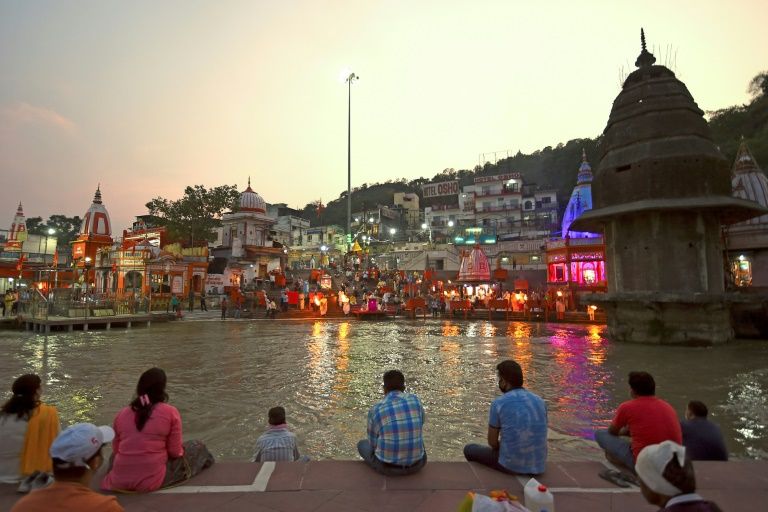Pilgrims trickle back to the Ganges as India lockdown eases
()
The town usually teems with tens of thousands of visitors who flock from far and wide for a dip in the holy waters of the Ganges and to catch riverside prayer ceremonies at dusk.
But India remains in the grip of a raging COVID-19 outbreak that has claimed more than 15,000 lives and infected over half a million people.
For the first time in as long as any local can remember, pilgrims stopped coming in late March after India imposed the world’s biggest coronavirus shutdown.
M.K. Vashistha, a wizened priest, told AFP that his elders would recount how even in the Spanish flu pandemic a century ago — which hit India hard — cremations on the banks of the holy river still took place constantly.
“Things still didn’t stop here at that time, like they have now,” he said.
In the past few weeks as India has eased restrictions — even as case numbers have surged — a few pilgrims have begun to return.
Now though, instead of broadcasting hymns and chants, Haridwar’s loudspeakers blare announcements telling people to wear masks and use sanitiser.
Temples ask devotees to keep a safe distance from each other and keep away from the statues of the gods that they usually touch, bless and offer flowers, sweets and crumpled rupee banknotes to.
“Look around,” Tanmany Vashishta from the Shri Ganga Sabha, one of Haridwar’s most influential religious groups, told AFP, pointing to a few hundred pilgrims on the streets, most in masks and keeping their distance.
“This isn’t even one or two percent of the normal times.”
– Centuries of records –
Hugging the banks of the Ganges as it emerges from the Himalayas, Haridwar is believed to be one of four places where drops of the elixir of immortality were spilled from a pitcher carried by the mythical bird Garuda.
A trickle of customers are now returning for the town’s famous ancient order of some 2,500 Hindu priests who since time immemorial have registered births and deaths for visiting pilgrims.
Deepak Jha, one eighth-generation such “purohit”, says the chunky ledger he is rolling up and tying with string contains records going back 11 generations for thousands of families.
“This is our culture, our tradition and history. It may be difficult for people to find their kids’ school notebook after six months, but we’ve kept these records for centuries,” Jha said.
The tomes, some 500 years old — the birch leaves used before then have long since crumbled — are written in a mix of Hindi, Urdu and Punjabi, reflecting the area’s complex mix of languages and cultures.
People from all over come to trace their ancestors and are visibly touched to see their forebears’ handwriting, tipping the priests handsomely for a detailed family tree.
– ‘We can’t live in fear’ –
Haridwar’s usually narrow and congested bylanes, full of shops selling religious books, artifacts, statues of Hindu gods, clothes, toys and sweets, have also never been so deserted.
“It isn’t a good situation right now,” Jyoti Arora, the owner of a shop bereft of customers told AFP.
“Right now, who knows who could be corona positive? Even we take a daily risk coming for work, but we have to do it for our families.”
Many normally busy hotels, eateries and restaurants remain shut. Thousands of workers have gone back to their home villages, and nobody is sure when they will come back.
One of the few pilgrims to return is Mohit Kumar, who came from Delhi to take a purifying dip in the Ganges, which is looking slightly cleaner for the lockdown.
“We can’t live in fear. We have taken all precautions, and pray that everyone around us stays healthy,” he said, accompanied by two friends as he headed to the holy river.
Disclaimer: Validity of the above story is for 7 Days from original date of publishing. Source: AFP.


